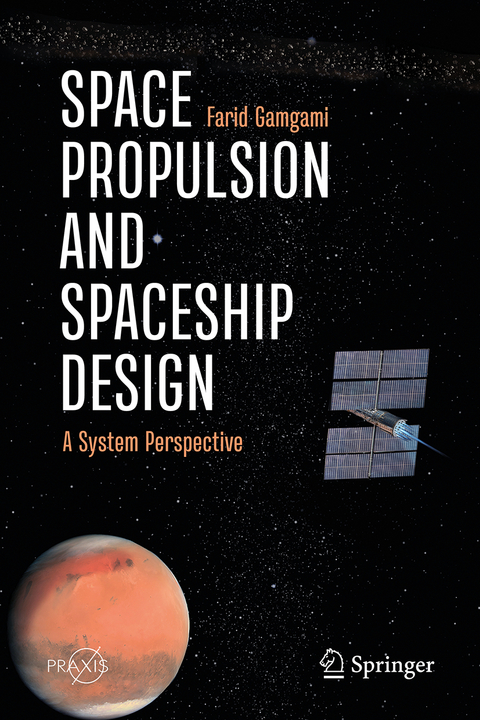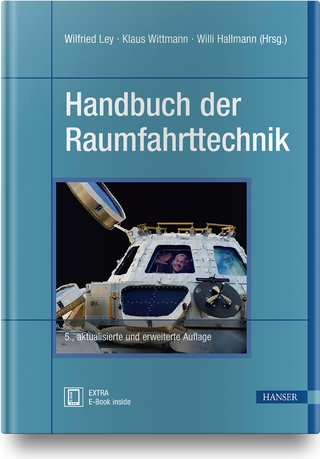
Space Propulsion and Spaceship Design
Springer International Publishing (Verlag)
978-3-031-71335-4 (ISBN)
- Noch nicht erschienen - erscheint am 17.01.2025
- Versandkostenfrei innerhalb Deutschlands
- Auch auf Rechnung
- Verfügbarkeit in der Filiale vor Ort prüfen
- Artikel merken
The objective of this textbook is to provide a synopsis of propulsion technologies in the context of spaceship design. The author identified a lack of multidisciplinary textbooks that explain to students both the technology and physics of space propulsion as well as its relationship to other disciplines in the process of spaceship design. To make the subject more tangible, the propulsion demanding context of space exploration was chosen.
The book therefore begins with the astronomical context relevant to human exploration of the solar system. This challenging endeavour requires powerful space propulsion systems of various types. Existing and emerging technologies are systematically discussed. Principle similarities and technological analogies between the different types are highlighted. Starting from the physical working principle, the book progressively extends the view to subsystem and system design aspects. This approach recognises that the propulsion subsystem is the most defining architectural element of large spacecraft, i.e. starships. Such a comprehensive presentation of propulsion technology from a system perspective is not yet reflected in the existing literature.
In order to apply the fundamental knowledge provided in the first 9 chapters, a mission to the dwarf planet Ceres is presented, where different propulsion technologies have to be combined to achieve the mission objectives. In this way, the reader is introduced to the basics of requirements breakdown, design space analysis and the technical trade-off process, all of which are essential for early mission planning. The book is aimed at advanced undergraduate and graduate students, recent postgraduates, and newcomers to the field of spacecraft design where propulsion is essential.
Dr. Farid Gamgami holds a Master's degree in aerospace engineering from the RWTH Aachen, with a focus on space propulsion and space transportation. Additionally, he obtained a PhD in Theoretical Astrophysics from the University of Heidelberg, which complemented his scientific training with in-depth studies of physical phenomena not commonly found in engineering. During his tenure at DLR and subsequent employment at OHB System AG, he developed a comprehensive understanding of spacecraft design by leading multidisciplinary teams on projects involving space transportation and deep space missions. Dr. Gamgami is currently vice director and head of international collaboration and education programme at the Key Laboratory for Satellite Digital Technology in Shanghai, which belongs to the Innovation Academy for Microsatellites (IAMCAS), an institute of the Chinese Academy of Sciences (CAS). He is the first non-Chinese to assume such a leading position in the field of space engineering in this prestigious scientific association.
Introduction.- The Vast Solar System and Principles of Spaceflight.- Deep Space Conditions.- Inner Solar Resources.- Taxonomy and Fundamentals of Space Propulsion.- Rocket Equations and Spaceship Design.- Acceleration Principles and Technologies.- Energy Sources and Power Conversion.- Propellant Management System.- Preliminary Mission and System Design for C-One.- Nuclear Propulsion Technology and Systems.
| Erscheint lt. Verlag | 17.1.2025 |
|---|---|
| Reihe/Serie | Astronautical Engineering | Springer Praxis Books |
| Zusatzinfo | X, 400 p. 100 illus., 20 illus. in color. |
| Verlagsort | Cham |
| Sprache | englisch |
| Maße | 155 x 235 mm |
| Themenwelt | Technik ► Luft- / Raumfahrttechnik |
| Schlagworte | Mission architecture • Propulsion technology • rocket design • space exploration • space propulsion • Spaceship Design • System design |
| ISBN-10 | 3-031-71335-4 / 3031713354 |
| ISBN-13 | 978-3-031-71335-4 / 9783031713354 |
| Zustand | Neuware |
| Haben Sie eine Frage zum Produkt? |
aus dem Bereich


